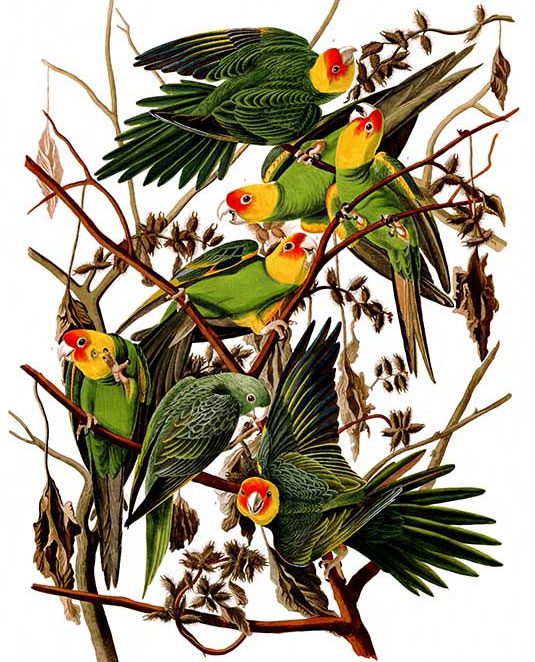Carolina Parakeet: Removal of a “Menace”
April 15, 2008
The only parrot native to continental North America north of Mexico, the extinct Carolina Parakeet was a grackle-sized gregarious bird, mostly green with a yellow head and orange cheeks.
The Carolina Parakeet inhabited deciduous forests and forest edges in the eastern United States as far north as the Great Lakes region, as well as wooded river bottoms of the Great Plains as far west as Nebraska. It nested in tree cavities and ate the fruits and seeds of many trees and other plants, such as thistles and cockleburs, as shown in this painting.
Outside of the breeding season the parakeet formed large, noisy flocks that fed on cultivated fruit, tore apart apples to get at the seeds, and ate corn and other grain crops. It was therefore considered a serious agricultural pest and was slaughtered in huge numbers by wrathful farmers. This killing, combined with forest destruction throughout the bird’s range, and hunting for its bright feathers to be used in the millinery trade, caused the Carolina Parakeet to begin declining in the 1800s. The bird was rarely reported outside Florida after 1860, and was considered extinct by the 1920s.
In the Audubon painting above, the bird scratching its head at the lower left is a female. The all-green bird to the female’s right is a juvenile. The other birds are all males.

All About Birds
is a free resource
Available for everyone,
funded by donors like you
American Kestrel by Blair Dudeck / Macaulay Library
